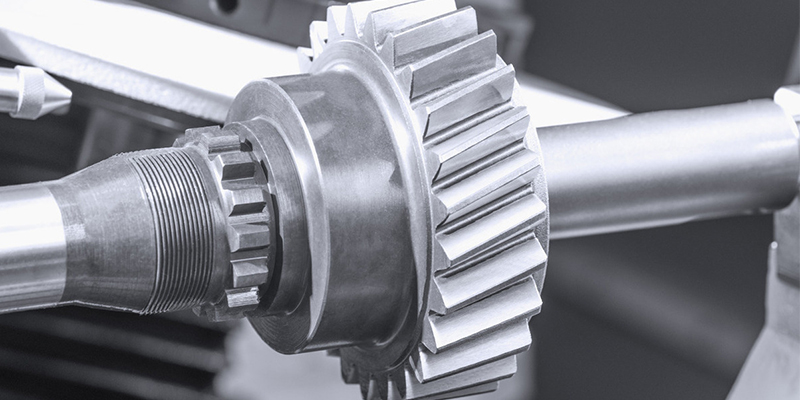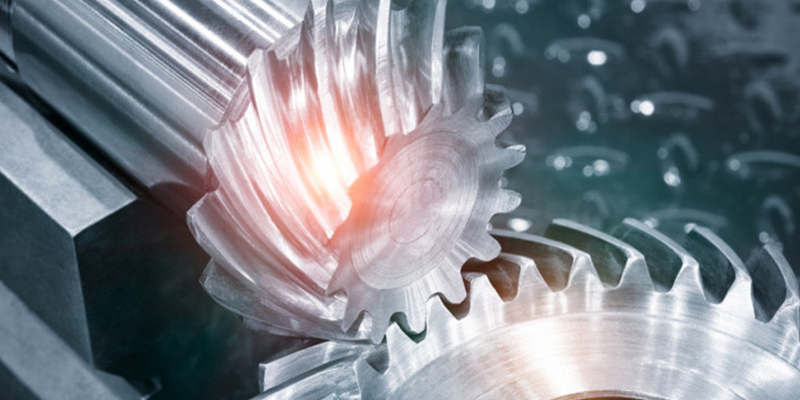Table of Contents
I. Introduction to
Splined Shafts
II. Functions of Splined Shafts
III. Applications of Splined Shafts
IV. Construction of Splined Shafts
V. Materials for Splined Shafts
VI. Using Splined Shafts
VII. Cleaning Splined Shafts
VIII. Custom Splined Shafts
IX. Summary
I. Introduction to Splined Shafts
Splined shafts are crucial mechanical components used in a wide range of applications, especially those involving rotational motion. These shafts have a series of ridges or teeth along their length, designed to transmit torque between components. Splines can be internal or external.
Commonly found in automotive drivetrains, industrial machinery, and marine propulsion systems, splined shafts offer advantages over keyed shafts by transmitting more torque and accommodating greater misalignment between components. This feature is particularly important in applications with movement or vibration, as the splines absorb these forces, preventing damage.
Different spline profiles exist to suit specific applications, including involute, straight-sided, and serrated options. Selecting the appropriate profile involves considering factors such as torque capacity, misalignment tolerance, and operating conditions.
II. Functions of Splined Shafts
Splined shafts serve multiple critical functions i
n various machinery and equipment:
Transmitting Torque: The primary function of a splined shaft is to transfer torque from one component to another. The teeth or ridges on the shaft engage with matching splines on the mating component, enabling the transmission of rotational force.
Absorbing Misalignment: Designed to allow some misalignment, splined shafts accommodate slight differences in positioning or movement during operation, preventing excessive stress and wear on components.
Enhancing Strength: The ridges or teeth on splined shafts provide additional support and rigidity, making them resistant to bending, twisting, and deformation under load.
Reducing Vibration and Noise: By creating a secure connection between components, splined shafts help minimize vibration and noise, leading to smoother, quieter operations and reduced component wear.
Simplifying Assembly and Disassembly:
Splined shafts facilitate easier assembly and disassembly of machinery and equipment, saving time and reducing the risk of component damage during maintenance or repair.
III. Applications of Splined Shafts
Splined shafts are used in various applications that require torque transmission and precise angular positioning. Common examples include:
Automotive Industry: Used in powertrain systems to transfer torque from the engine to the wheels, and in steering mechanisms to transmit input from the steering wheel to the control system.
Industrial Machinery: Found in pumps, compressors, conveyors, lathes, and milling machines.
Marine Industry: Employed in boat engines, propeller systems, winches, and equipment on ships and oil rigs.
Aerospace Industry: Used to transmit torque in aircraft engines and other critical systems.
Agricultural Machinery: Utilized in tractors, harvesters, and other farming equipment to transfer torque from the engine to various components.
Construction Machinery: Found in excavators, bulldozers, and cranes.
Power Transmission: Essential in gearboxes, differentials, and transfer cases.
IV. Construction of Splined Shafts
A splined shaft is cylindrical with longitudinal ridges and grooves (splines) on its surface. These splines engage with matching splines on other components to transmit torque and maintain precise angular positioning. The construction process typically includes:
Material Selection: Depending on application requirements, materials can range from steel and aluminum to titanium.
Machining: The shaft is machined to the desired dimensions using turning, milling, or grinding processes. Splines are cut using broaching or hobbing tools.
Heat Treatment: Improves strength, hardness, and wear resistance through quenching, tempering, or annealing.
Finishing: Grinding or polishing achieves the required surface finish and dimensional accuracy.
V. Materials for Splined Shafts
Splined shafts can be made from various materials depending on application requirements:
Stainless Steel: Known for its strength, corrosion resistance, and longevity, ideal for marine and aerospace applications.
Carbon Steel: An economical option for industrial machinery and automotive applications.
Alloy Steels: Such as chrome-molybdenum and nickel-chromium, used when higher strength and wear resistance are required.
Aluminum Alloys: Lightweight and corrosion-resistant, suitable for aerospace and other weight-sensitive applications.
Other Materials: Including brass, bronze, and titanium, depending on specific needs.
When selecting a material, factors like required strength, corrosion resistance, weight, and cost must be considered to ensure durability and performance.
VI. Using Splined Shafts
Different types of splined shafts have specific design and application requirements:
Crowded Spline Shafts: Designed for high torque and misalignment resistance. Ensure the mating component has matching splines for precise angular positioning and torque transmission.
Parallel Key Spline Shafts: Commonly used, featuring straight-sided keyways. Insert keys into keyways before assembly for accurate positioning and torque transmission.
Involute Spline Shafts: Feature an involute profile for smooth, efficient torque transmission. Ensure mating components have matching teeth for precise angular positioning and torque transfer.
Helical Spline Shafts: Have angled teeth for higher load capacity and smoother torque transmission. Ensure matching helical teeth for accurate positioning and torque transmission.
Serrated Spline Shafts: Feature a serrated pattern for high torque transmission in heavy-duty applications. Ensure mating components have matching serrations for precise positioning and torque transmission.
VII. Cleaning Splined Shafts
Proper cleaning of splined shafts is essential for optimal performance and longevity. The cleaning method depends on the type of splined shaft and surface contamination:
Broaching: Wipe the surface with a cleaning brush or rag. Use solvents like alcohol or acetone if necessary.
Shaping: Use a wire brush or rag. Solvents like kerosene or diesel fuel can help dissolve contaminants.
Milling: Use a brush or rag. Mineral spirits may be used as a solvent.
Hobbing: Use a brush or rag. Solvents like MEK or TCE can be effective.
Rolling: Use a brush or rag. Isopropyl alcohol can dissolve contaminants.
Grinding: Use a brush or rag. Acetone or brake cleaner can be applied.
Extrusion: Use a brush or rag. Denatured alcohol can be used as a solvent.
VIII. Custom Splined Shafts
As a manufacturer or supplier, we offer custom splined shafts tailored to meet specific customer requirements. We work closely with clients to understand their needs regarding torque, speed, and load capacity. Custom splined shafts ensure a perfect fit, improved performance, increased durability, and flexibility. We also provide mold designing, mold manufacturing, rapid prototyping, and CNC machining services. Our advanced technology ensures we deliver high-quality products to customers worldwide.
IX. Summary
Splined shafts are crucial components in various machinery and equipment, performing vital functions such as transmitting torque, absorbing misalignment, enhancing strength, reducing vibration and noise, and simplifying assembly and disassembly. Available in various sizes and configurations, the choice of spline profile depends on specific application needs. Overall, splined shafts provide an efficient and reliable means of transmitting power and torque, improving the performance, dependability, and lifespan of machinery and equipment. Understanding their characteristics and applications is essential for anyone involved in designing, manufacturing, or maintaining mechanical systems.
LESUN specializes in being a
spline shaft supplier. If you need splined shafts, please contact us, and we will provide you with high-quality splined shafts.We have many splined shafts for sale.





